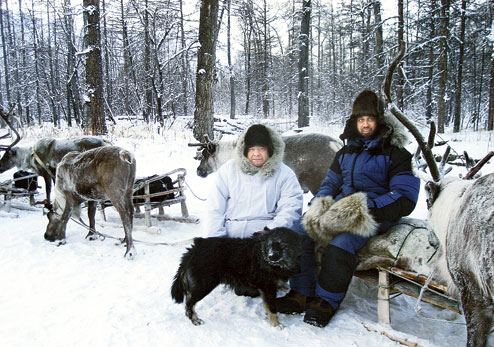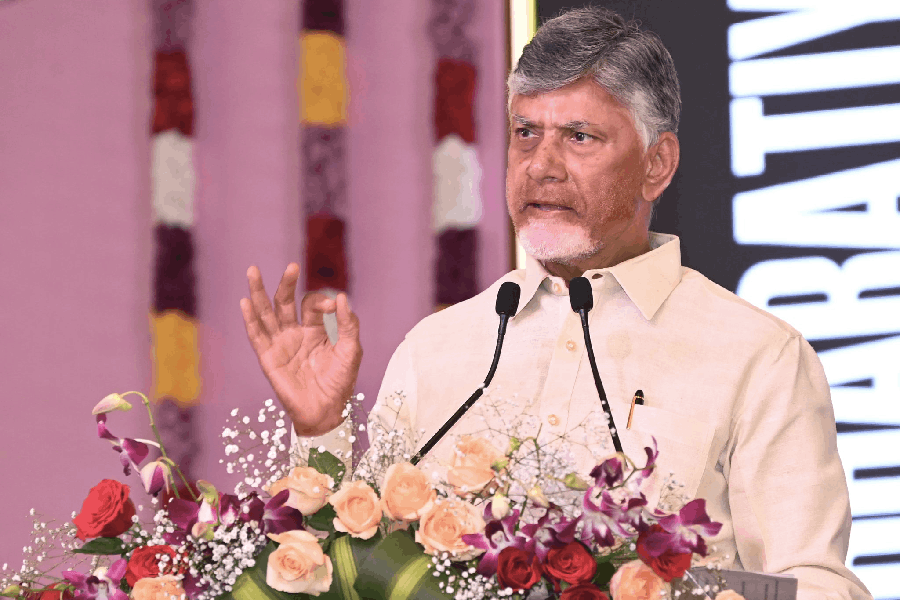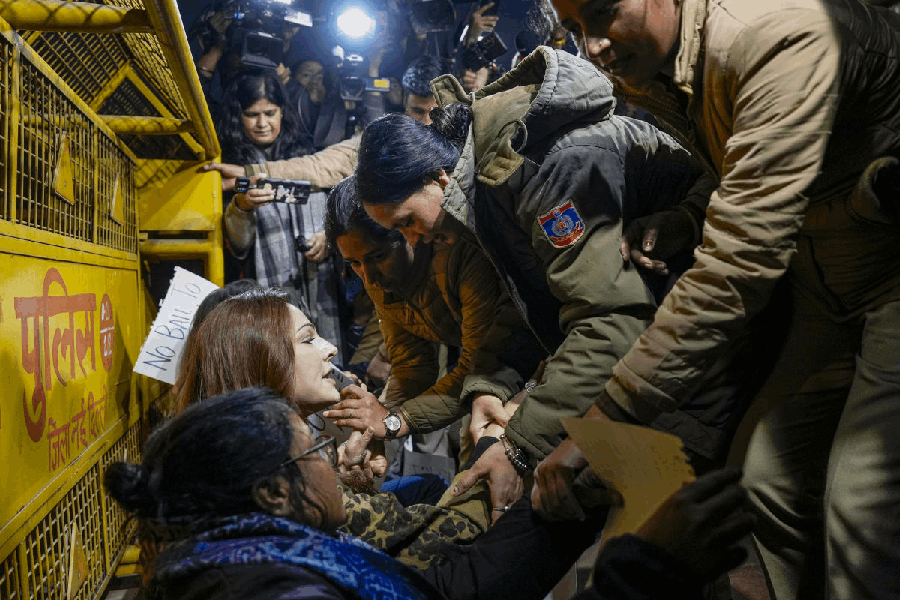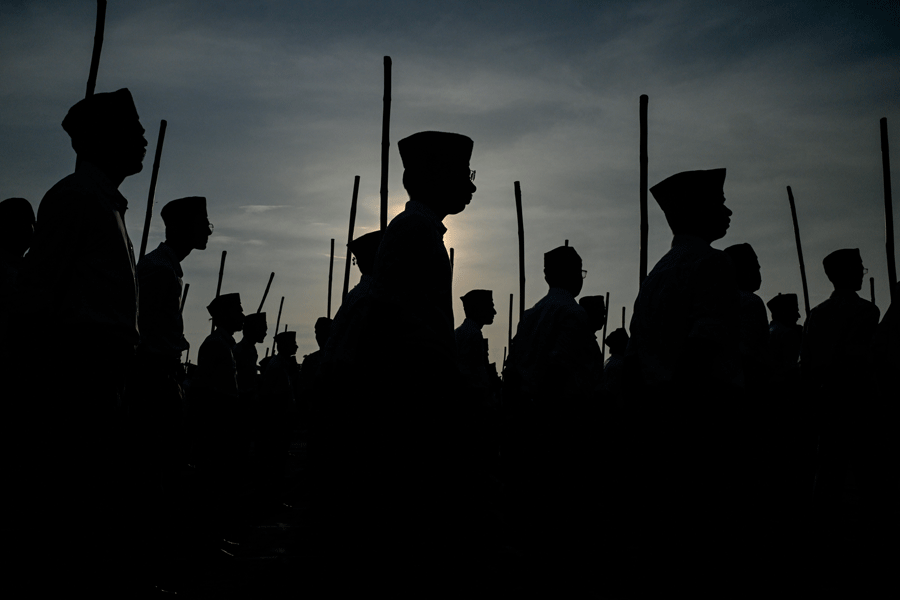 |
| Subhankar Banerjee (right) in Siberia. Credit: Samona Kurilova |
New Delhi, April 13: An Indian-born American engineer who quit a research job with Boeing to explore the wilderness and evolved into a provocative crusader for the Arctic environment has now set his sights on protecting India’s forests.
In the 13 years since he gave up research to pursue environmental photography, Subhankar Banerjee has sought to stir the public’s conscience about the fragility of the planet’s most vulnerable habitats through images of the Arctic and the American desert.
Now, he says, he is ready to engage with the land of his roots.
Banerjee’s discourse seems to resonate with typical environmental rhetoric. He calls America “the world’s biggest climate criminal” and has warned that India’s “merchants of desire” are pushing consumption in the country to unsustainable levels.
He has questioned the Barack Obama administration’s support for drilling in the Arctic Ocean with the same intensity as he had criticised the George W. Bush administration’s inclination to open up the Arctic National Wildlife Refuge in Alaska for oil.
In 2003, Banerjee became a US citizen after his Arctic photographs triggered controversy and he feared he might be deported.
“Academia is my refuge,” said Banerjee, who asserts his work is “neither sloganeering nor mere documentation” but an interpretation through visual analysis that can guide discourse in the emerging field of environmental humanities.
His photographs — whether of musk ox in Alaska or reindeer in Siberia or the pinyon pine trees in the New Mexico desert — have been featured in dozens of museums and galleries across the US and Europe, often displayed on panoramic 68” x 86” frames.
Growing up in a middle-class household in Bengal, the Behrampore-born Banerjee had never imagined he would some day be linked to the Arctic, or any wilderness for that matter, or to the visual arts.
He recalls watching Satyajit Ray movies and picking up lessons in painting from a great-uncle during his school years. “But the idea of a career in art would simply not have been entertained,” Banerjee, 45, told The Telegraph.
So he studied electrical engineering at Jadavpur, then moved to the New Mexico State University for two master’s degrees, one in computer science and, because he found the fundamental sciences more attractive than engineering, a second in physics. His transition towards the wilderness and the visual arts began in New Mexico.
While in India, Banerjee had never engaged for long with nature. In New Mexico, a fellow Indian student introduced him to backpacking and trudging across the desert. He bought himself a camera.
Banerjee says he enjoyed the “incredible open spaces” in the desert, a sharp contrast to densely populated Bengal. But after his education, he joined a US government research lab, then Boeing in Seattle where he worked on software to analyse radar signatures of planes.
“Boeing was a great experience; I thoroughly enjoyed it,” Banerjee said.
But in the northeastern US, he continued to explore the neighbouring mountains and Canada, drawing closer to photography.
In February 2000, he quit his job with, he says, no “clear plan in mind” but only a desire to find some way of combining his fondness for photography and the wilderness.
During a casual trip with friends to Manitoba, Canada, he visited an eco-tourism site where he spotted a polar bear surrounded by — he still remembers — eight buggies: trucks with their loads of tourists.
“I found it a deeply disturbing spectacle. The polar bear was in the most unnatural of circumstances and I remember thinking: it isn’t for this that I’ve left a nice research job,” Banerjee said in a telephone interview.
He says he began to want to live alone in the wild with polar bears. “It was a romantic idea that has shattered over time,” Banerjee said. He began a 14-month, 6,000km journey through the National Arctic Wildlife Refuge.
He observed wildlife and the native human communities, the Gwich’in and the Inupiat, learning their way of life in the fragile habitat that studies have shown is among the most vulnerable to global warming.
But living in the Arctic is expensive, and Banerjee found himself with a $100,000 debt, having spent the $80,000 savings from his Boeing job and funds he had received from a non-government agency.
Then, a Seattle publisher, The Mountaineers Books, published his first book, Arctic National Wildlife Refuge: Seasons of Life and Land, a comprehensive documentation of the wilderness he had explored. Many of his photographs, he concedes, “demand engagement from viewers”.
“You can call it a poetic approach (to photography), a slow engagement,” he said.
One of his images shows subtle claw marks made by a polar bear and her cub against the backdrop of a vast field of snow. Another image displays a herd of 13 musk oxen with a single tiny calf.
Last year, Banerjee put together a second book, Arctic Voices: Resistance at the Tipping Point, an anthology of writings, art and photographs by scientists, conservationists and visual artists.
Banerjee, whose parents and two siblings are in India, has in recent years tried to keep in touch with environmental issues in the country.
During a recent trip to India, he visited a Himalayan mountain village called Sarmoli, where an NGO called Maati is run by Malika Virdi. Banerjee and Virdi see parallels in their own activities.
Virdi, who quit city life to take up farming in Sarmoli in 1992, has worked with women on livelihood issues and ecological security, building networks and, as she puts it, “hanging together in happiness and sadness”.
“Her work is inspiring,” said Banerjee, who says he is looking forward to “engage in some way” with forests and local communities in India.
He concedes he has no firm project idea yet but hopes something will emerge to apply his brand of scholarship in India.
He has been thinking as much of the Sunderbans as of the Himalayan mountain forests. “It’s important for me to develop deep personal connections with the places.”











